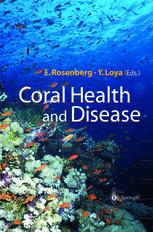

Most ebook files are in PDF format, so you can easily read them using various software such as Foxit Reader or directly on the Google Chrome browser.
Some ebook files are released by publishers in other formats such as .awz, .mobi, .epub, .fb2, etc. You may need to install specific software to read these formats on mobile/PC, such as Calibre.
Please read the tutorial at this link: https://ebookbell.com/faq
We offer FREE conversion to the popular formats you request; however, this may take some time. Therefore, right after payment, please email us, and we will try to provide the service as quickly as possible.
For some exceptional file formats or broken links (if any), please refrain from opening any disputes. Instead, email us first, and we will try to assist within a maximum of 6 hours.
EbookBell Team

0.0
0 reviewsCoral reefs constitute the most spectacular and diverse ecosystems in the marine environment. They form reservoirs of the highest biological diversity, including genetic resources and bio-active compounds. Unfortunately, coral reefs are also among the most heavily degraded marine ecosystems. Over the last two decades, coral reef communities have been experiencing increasingly stressful conditions due to a combination of natural and anthropogenic detrimental factors. Coral diseases are among the most recent in a series of threats (e.g. coral bleaching, over exploitation of fish stocks, destructive fishing practices and coastal developments) that is challenging the resilience of coral reef communities.
During an international meeting on coral diseases held in Eilat, Israel, in 2003, leading scientists presented reviews and recent results of laboratory research and in situ observations in order to assess the status of coral health and to understand the disease mechanisms.
The most relevant papers are now presented in Coral Health and Disease. The book starts with several case studies of reefs, which strongly differ regionally, e.g. the Red Sea, Caribbean, Mediterranean, Gulf of Mexico, Japan, western Indian Ocean and the Great Barrier Reef. The second part on microbial ecology and physiology contains contributions describing the symbiotic relations of corals and microbes, the microbial role in nutrition and bleaching resistance and the antibacterial activities of corals. Particular coral diseases, such as aspergillosis, white pox, black, yellow and white band diseases are treated in the third part. Finally, different hypotheses of the mechanisms of coral bleaching, including a projection of the future of coral reefs, are discussed.